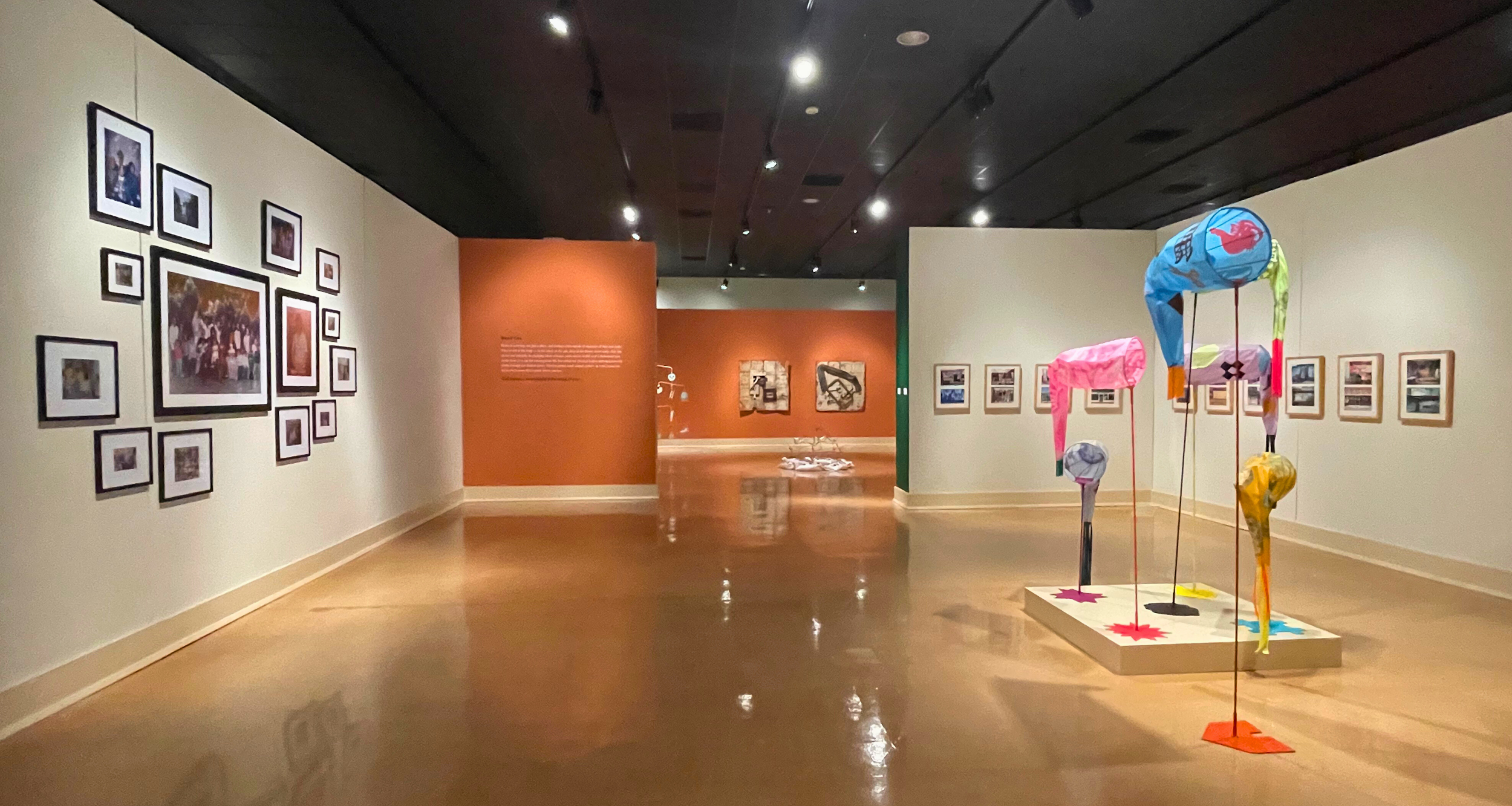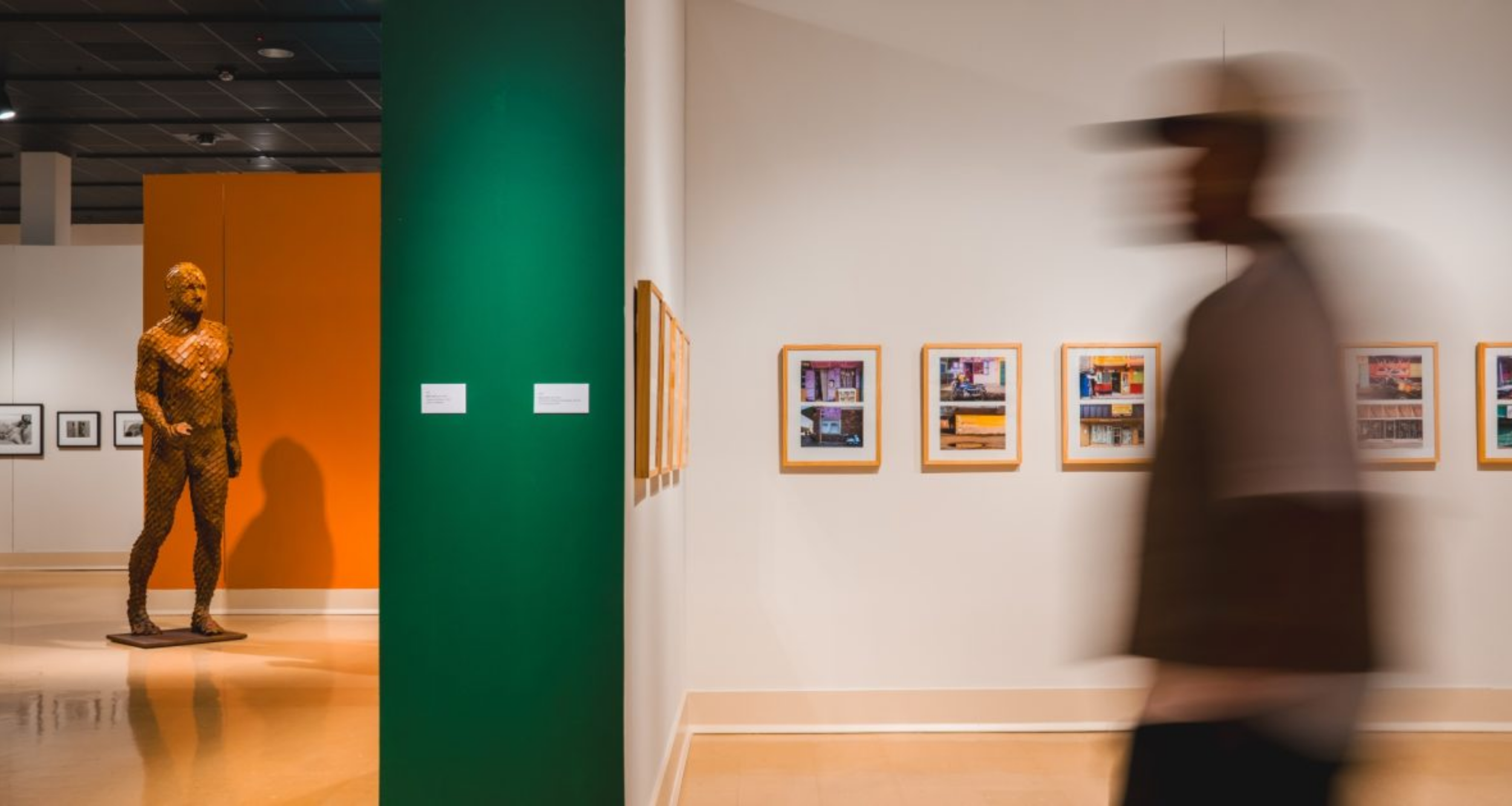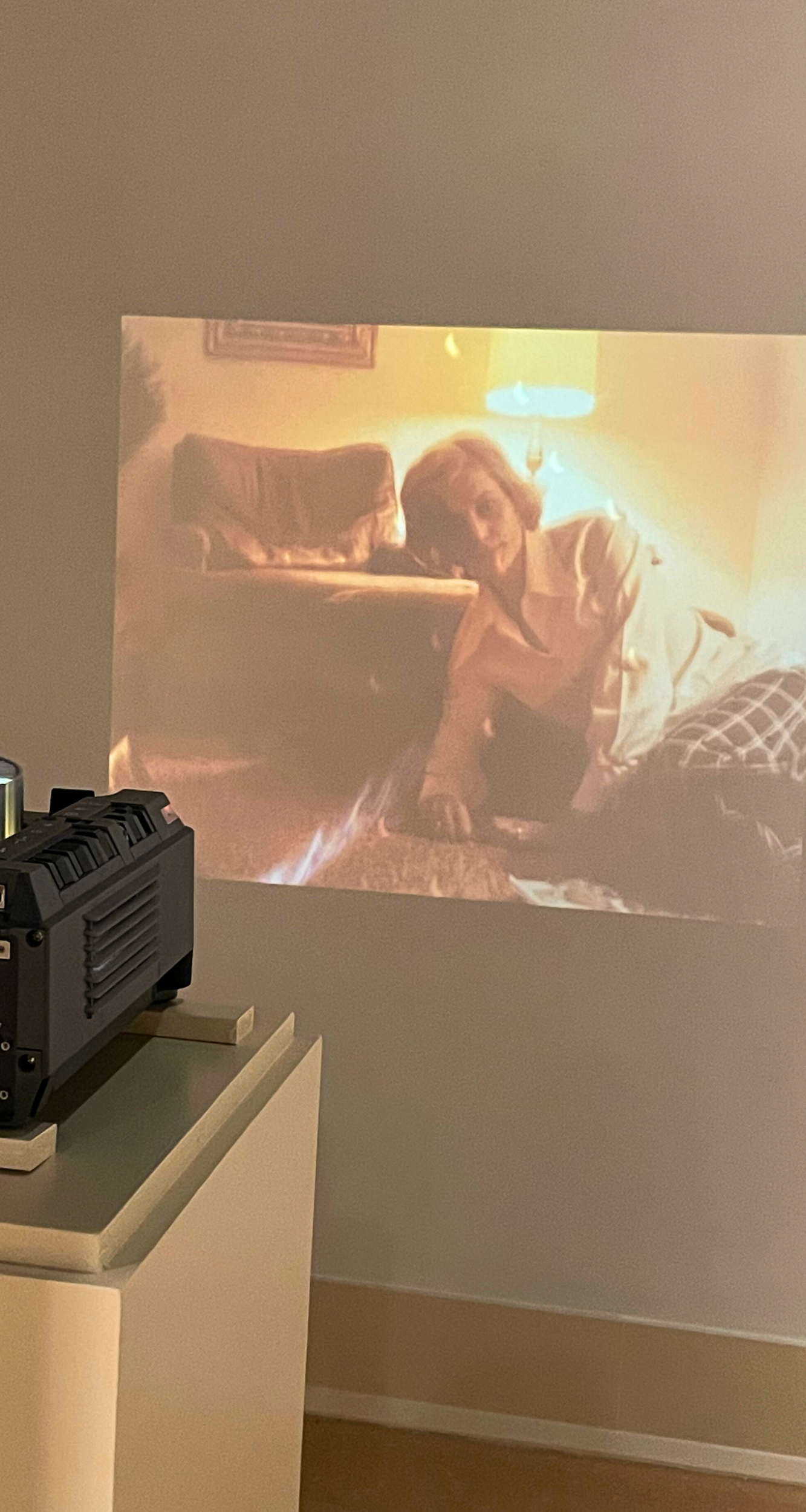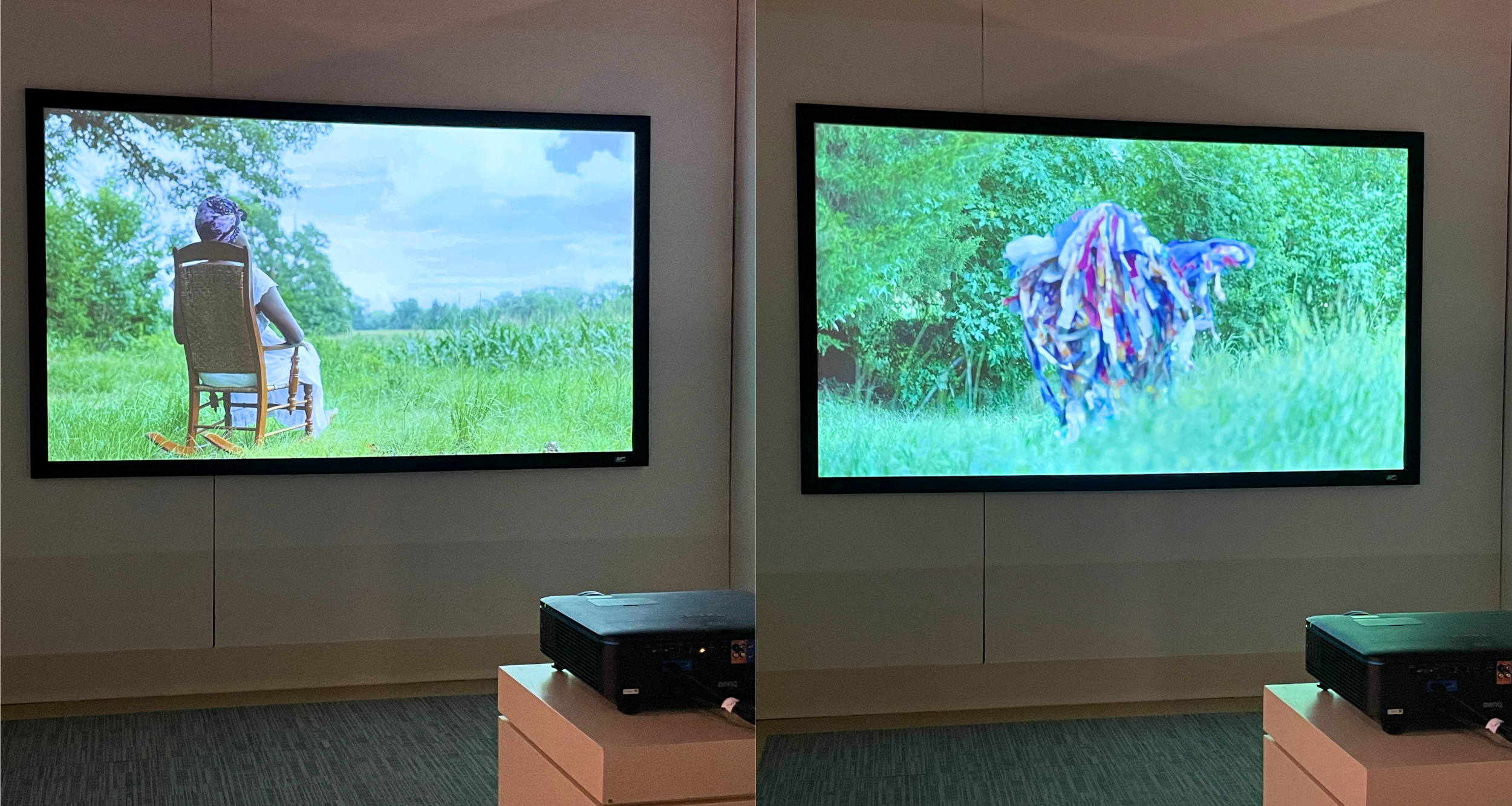Call Home
PDF: Myburgh, review of Call Home
Curated by: TK Smith
Exhibition schedule: Mississippi Museum of Art, Jackson, June 28–September 7, 2025
Exhibition catalogue: 2025 Mississippi Invitational: Call Home (digital catalogue), Mississippi Museum of Art, last modified July 29, 20025, https://www.msmuseumart.org /exhibition/test-2025-mississippi-invitational
Before a single artwork came into view, the exhibition Call Home surrounded the viewer in sound. A dial tone stretched into static. The beep of an answering machine followed. Then disembodied, intimate voices could be heard from Emma Lorenz’s installation You Have XX Messages (2025). “Call me back,” one voice said, “Just wanted to check in.” This layered sonic prelude lingered in the gallery like memory itself: partial, repeated, unresolved. It ushered the listener into an exhibition attuned to delay, interruption, and the residual architectures of longing. Here, listening became the first gesture, an act of attention and of care. This review traces three themes of the exhibition that explored the unsettled and permeable conditions of home: domestic labor, the body as vessel and process, and the archive of ancestral presence.
The 2025 Mississippi Invitational framed Call Home as both an open invitation to reflect on belonging and an insistence on confronting the complexities that make home fragile. Held biennially at the Mississippi Museum of Art in Jackson, the Invitational is a platform for recognizing and supporting outstanding contemporary artists living and working across the state. In this iteration, curator TK Smith brought together twelve artists whose practices reflect and reshape the unstable meanings of home. This review is based on a visit to the exhibition on July 2, 2025, and includes installation photographs (figs. 1–2) and quotes from wall texts reviewed at that time.


Call Home foregrounded a generation of artists whose practices reveal the layered, evolving nature of contemporary art in the South. Their works bring forward perspectives rooted in intergenerational memory, Black life, queer intimacy, and environmental precarity. They refuse the neat binaries of past and present, local and global, instead drawing connections between Mississippi’s material landscapes and its conceptual, often contested, meanings. Here I highlight a selection of works rather than surveying all twelve participants, although the themes I discuss are echoed throughout the show.
Call Home presented an exploration of home as both material and ephemeral. Home is grounded in the clay, rust, wood, and fabric of lived environments, yet it also takes shape through memory and the intangible. What emerged is a curatorial vision that refused nostalgia. Instead, the exhibition moved through dislocation, grief, intimacy, and return. It asked how we reach across silence, how we hold onto what slips away, and how the impulse to connect persists even when the line has gone quiet. It included a layered sound environment and low-light projections, as well as sensitive imagery of birth and decay. Wall texts, seating, and clear pathways helped mediate these sensory conditions for visitors.
Across Call Home, the theme of the domestic emerged as a permeable and emotionally charged environment, where care, memory, and nature intersect. Through works that evoke laundry, dishes, cleaning rituals, and the slow encroachment of decay, the exhibition reframed the home as a site of accumulation. Material and emotional residue settles into surfaces, and the ordinary becomes a vessel for grief, intimacy, and quiet transformation.

Christina McField’s photographic series Where Time Stands Still (2021–ongoing; fig. 3) draws the viewer into the suspended temporality of interior life. Her archival inkjet prints document not action but its aftermath: a window-lit kitchen counter, a sink filled with vessels and utensils, the overlooked rhythms of domestic labor. These images resist narrative closure. They are not concerned with order or disorder but with presence.
A similar sensibility informs Ashley Gates’s Housesitting (2022–ongoing), a series of black-and-white archival pigment prints centered on the interiors of borrowed homes. Her compositions linger on bathroom sinks, cluttered vanities, and kitchen counters. These spaces feel intimate and tender and are not curated. Gates offers attention to these rooms, but she does so from the position of a visitor. She is not at home in them, and neither are we. In documenting the traces of provisional caretaking, her work gestures toward the shared routines that undergird domestic life, even in the absence of permanence or possession. Jerrod Partridge’s handmade paper paintings enter this thematic constellation with quiet restraint. His depictions of domestic vignettes, such as a pile of laundry or the sink of dishes, do not disrupt; they rest. His textured surfaces and understated compositions reflect a reverence for the mundane.
If the domestic is often figured as a space of order and stability, Sue Carrie Drummond’s The Mold Garden (2024) foregrounds its porousness and susceptibility to change. The installation, composed of monotypes and pochoir prints (a stencil-based printmaking technique) arranged as architectural fragments, sprawls across the floor as if growing outward. The sequence begins simply, accompanied by the wall text: “Week one. Just a smell.” A later label noted spots that “spread, gather, and multiply,” marking the slow incursion of decay. Viewed alongside these labels, the work invites reflection on the relationship between growth and rot, and the home as a living system marked by change and time.
These works propose that the domestic is not fixed. It is porous, affective, and alive. Memory collects in its corners. Nature enters through its seams. In the spaces between clean and dirty, empty and full, seen and remembered, Call Home located its most intimate terrain.
The second theme I identify for the exhibition turns to the body, not as a singular entity but as a vessel, metaphor, and process through which home is felt and transformed. It is rendered across a broad material spectrum that holds memory, transition, and transformation in tension. Through steel, ceramic, velvet, bone, and binder clip, the works gathered in Jackson reflect on how the body anchors the most intimate experiences of home, labor, and loss.
Betty Press’s documentary photographic series Born at Home (2000–2003) grounds this exploration in the literal act of emergence. Her black-and-white images chronicle the work of midwife Karen Kennedy, capturing home births across six Florida families. The series attends to birth as both ritual and labor, miracle and exhaustion. Press’s lens remains focused on hands, faces, sweat, and relief. Perhaps the home in these photographs functions not only as a backdrop but as a participant. It can be seen as sheltering bodies in transition and bearing witness to the threshold between pain and life.
That sense of embodied transformation continued in Jason Kimes’s sculptural trilogy. Veni (2025) presents a translucent epoxy infant, curled and spectral, a figure that feels newly arrived. Around a corner, Vidi (2025) stands in contrast. Constructed from Cor-Ten steel, its rusting layers evoke solidity achieved through corrosion. Vici (2025), a towering skull in polished steel, completes the arc. With its mirrored surface, the form literalizes reflection on time, on decay, and on the afterimage of the self. Kimes’s suite moves from softness to monumentality, from infancy to icon, and it can be read as marking the body through the passage of time and material change.
In Passage of the Spine (2025; fig. 4), Allen Chen, too, takes on the body through vertebral ceramic forms suspended across the gallery in quiet procession. Each piece, cracked and pigmented, implies both skeletal structure and geological form. A spine suggests a landscape; the body suggests terrain. Chen’s artist statement notes, “Home is no longer a fixed point. It is a process.” His installation reflects this condition. The work indicates movement, vulnerability, and the necessity of recalibration across memory and geography alike.

Some works approach the body obliquely. Rylee Brabham’s Junk Drawer (2025) arranges a testosterone vial, syringe, and child’s note in a velvet-lined drawer, invoking private rituals of transition and becoming. Connor Frew’s Poem for Daniel Buren (Flags) (2024) suspends risograph banners (a stencil-based digital duplicator process) printed from scans of his own skin, so that the body can be read as rhythm, repetition, and light.

A final theme within the exhibit considers the archive of home as fragile yet resonant terrain, where memory and ancestral presence persist in partial, layered forms. These works dwell in the aftermath of home, in what has been carried forward and what is still longed for. They ask how we hold space for what we inherit.
Ashley Gates’s Diamond Ring (2024; fig. 5) sets the tone with intimate domestic imagery projected from a vintage slide carousel. The wall text identifies her use of photographs of her late mother alongside images of the 2024 total solar eclipse, which merges celestial cycles with familial memory. Using a handmade pinhole camera to trace the moon’s path across the sun, she overlays eclipse projections onto archival photographs, some taken before her birth, creating constellations of grief, memory, and reverence. The work invites a meditation on loss and continuity, reframing the photographic archive as both personal relic and cosmic register. In an accompanying Polaroid, the solar eclipse is frozen in a moment of suspended celestial time, and Chen’s sculptural installation Moon Rocks is visible in the reflection on the photograph’s glass. That unintentional layering of works, one image ghosted into another, suggests how memory operates: never clean, always overlaid with new meaning and with what is just out of frame.
A more documentary tone appears in Betty Press’s Storefronts in Kenya and Mississippi (2001–3). These paired photographs offer a visual dialogue across continents, presenting storefronts as sites of commerce, culture, and community. Their mirrored composition suggests both connection and distance. Though rooted in ethnographic practice, the diptychs (two-part images) ask the same questions that animate the exhibition: what is inherited, what persists, and how do we recognize ourselves across spatial and temporal differences.
Powerful work by Alexis McGrigg articulates the sacred dimensions of home, memory, and ancestral relation. In A Personal Constellation (2025), McGrigg overlays family photographs with gold leaf and pigment, obscuring faces while also sanctifying them. Some figures are rendered in silhouette; others remain legible but distant. This gesture protects what memory has begun to fade, offering reverence rather than resolution. Her treatment of the image can be interpreted as an affirmation of the idea that to remember is also to transform.
In her video installation Alterity: Unknown Histories (2023; fig. 6), McGrigg returns to her familial land in Utica, Mississippi. The film centers on a figure clothed in ritual costume, designed in collaboration with her mother, Donna McGrigg. The figure moves slowly through woods and fields, enveloped by the landscape but never fully absorbed into it. The work layers performance, prayer, and absence into a meditation on belonging. As curator TK Smith observes in his curatorial essay on McGrigg’s work, it becomes a spiritual return to land and water by someone who has never had the opportunity to know precisely where she is held or how her thread runs through the larger weave of intergenerational memory.1

McGrigg’s work does not present the archive as whole. It treats it as active, unfinished, resistant to closure. Her constellations of the known and unknown do not seek to resolve memory’s gaps but instead refuse erasure while acknowledging that recovery is always partial. In that refusal, the call at the heart of the exhibition returns once more.
Call Home makes listening itself into a curatorial method, a way of attending across distance and memory.
Call home. I need to hear your voice.
Cite this article: Brittany Myburgh, review of Call Home, Mississippi Museum of Art, Panorama: Journal of the Association of Historians of American Art 11, no. 2 (Fall 2025), https://doi.org/10.24926/24716839.20547.
Notes
- TK Smith, “Alexis McGrigg,” in 2025 Mississippi Invitational: Call Home (digital catalogue), Mississippi Museum of Art, accessed August 15, 2025. https://www.msmuseumart.org/artist/mcgrigg-alexis. ↵
About the Author(s): Brittany Myburgh is an assistant professor of Art History at Jackson State University in Mississippi.

